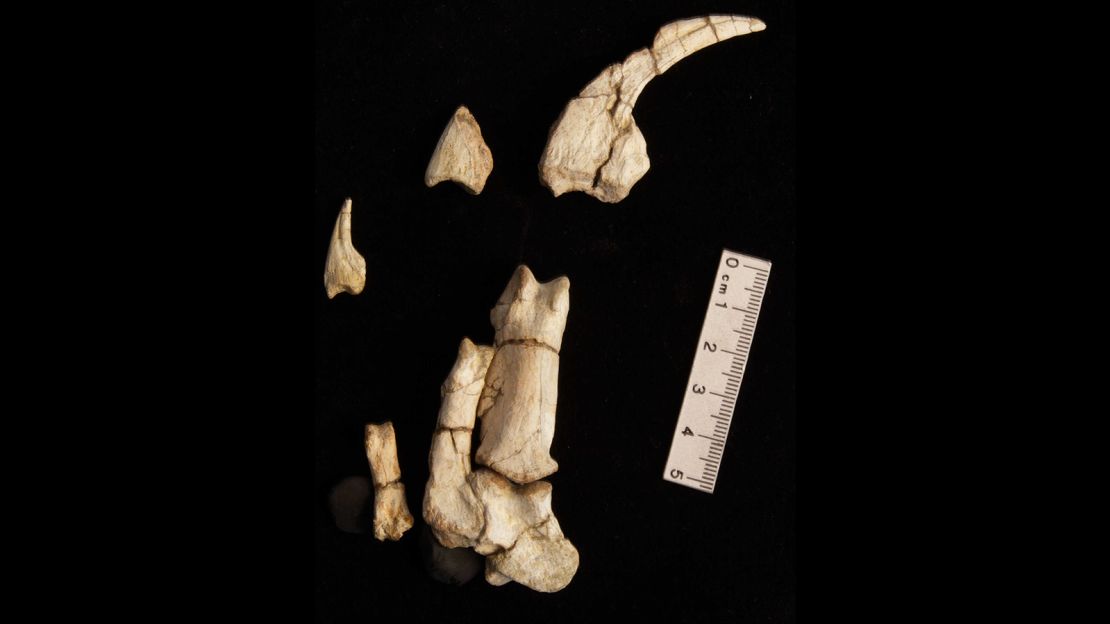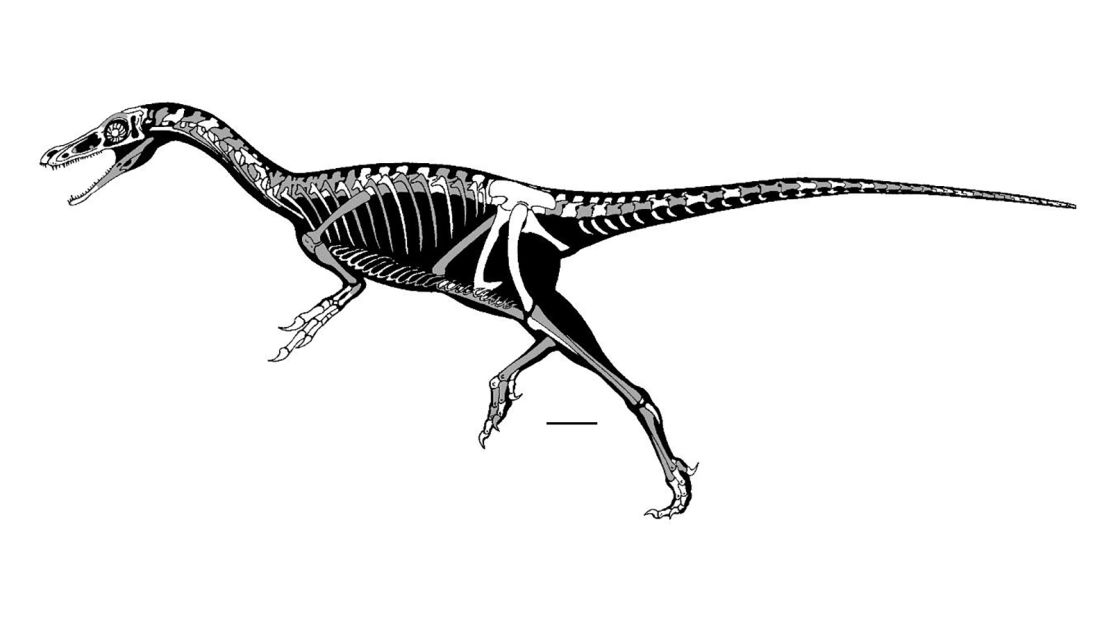Story highlights
Two dinosaur fossils fill in a gap for the evolution of alvarezsaurs
The dinosaur adapted to be an insect-eater with few teeth and one giant claw on each hand
The discovery of two dinosaur fossils in China is shedding light on a previously missing chapter of evolution, according to a new study. The dinosaurs were announced along with the new research on Thursday in the journal Current Biology.
Both dinosaurs are alvarezsaurs, which began as meat-eaters that adapted to eat insects living in colonies, like anteaters. But they also had many similarities to birds, with bird-like skulls and hind limbs, the study said.
“Alvarezsaurs are weird animals,” said Jonah Choiniere, study co-author and professor at the University of the Witwatersrand in South Africa, in a statement. “With their strong, clawed hands and weak jaws, they appear to be the dinosaurian analogue to today’s aardvarks and anteaters.”
And when a dinosaur evolves from a meat-eater to an insect-eater, some pretty strange things can happen to their appearance.

Early on, the dinosaurs were better equipped to be meat-eaters, with teeth and hands that could help them catch prey. But they evolved, losing teeth and developing shorter arms and a hand with one single huge claw. The claw could help them tear open rotting logs or anthills.
Like horses, which lost their individual toes as they adapted, alvarezsaurs reduced and lost their fingers over time.
“The new fossils have long arms, and so show that alvarezsaurs evolved short arms only later in their evolutionary history, in species with small body sizes,” said Roger Benson, study co-author and professor at Oxford University, in a statement. “This is quite different to what happens in the classic example of tyrannosaurs, which have short arms and giant size.”
Because of the evolution of their diet and appearance, resulting in some startling changes like unusually short limbs and less teeth, there has been controversy over their history, where they originated and where they belong on the evolutionary tree.
The two new dinosaurs are Xiynykus, found in northwestern China, and Bannykus, found in north-central China. They are from the Early Cretaceous period, which stretched from 100 million to 146 million years ago.

They help fill in a “ghost lineage” spanning 70 million years, falling right at the midpoint between the earliest and latest alvarezsaurs. The researchers said this helps cement that the dinosaurs began in Asia and moved on to other continents later as they evolved.

Alvarezsaurs began with relatively long arms and grasping hands in Haplocheirus during the Middle to Late Jurassic Period, evolved to have long arms with specialized hands found in Xiynykus and Bannykus during the Early Cretaceous Period, and then became known for short arms with a big single claw in Shuvuuia during the Late Cretaceous Period.
“This transition plays out in an incremental fashion over more than 50 million years,” said XU Xing, study author and professor at the Institute of Vertebrate Palaeontology and Palaeoanthropology of the Chinese Academy of Sciences, in a statement.
James Clark, co-author and honorary professor at Wits University, noted in a statement that “The fossil record is the best source of information about how anatomical features evolve. And like other classic examples of evolution such as the ‘horse series,’ these dinosaurs show us how a lineage can make a major shift in its ecology over time.”






































































































































































